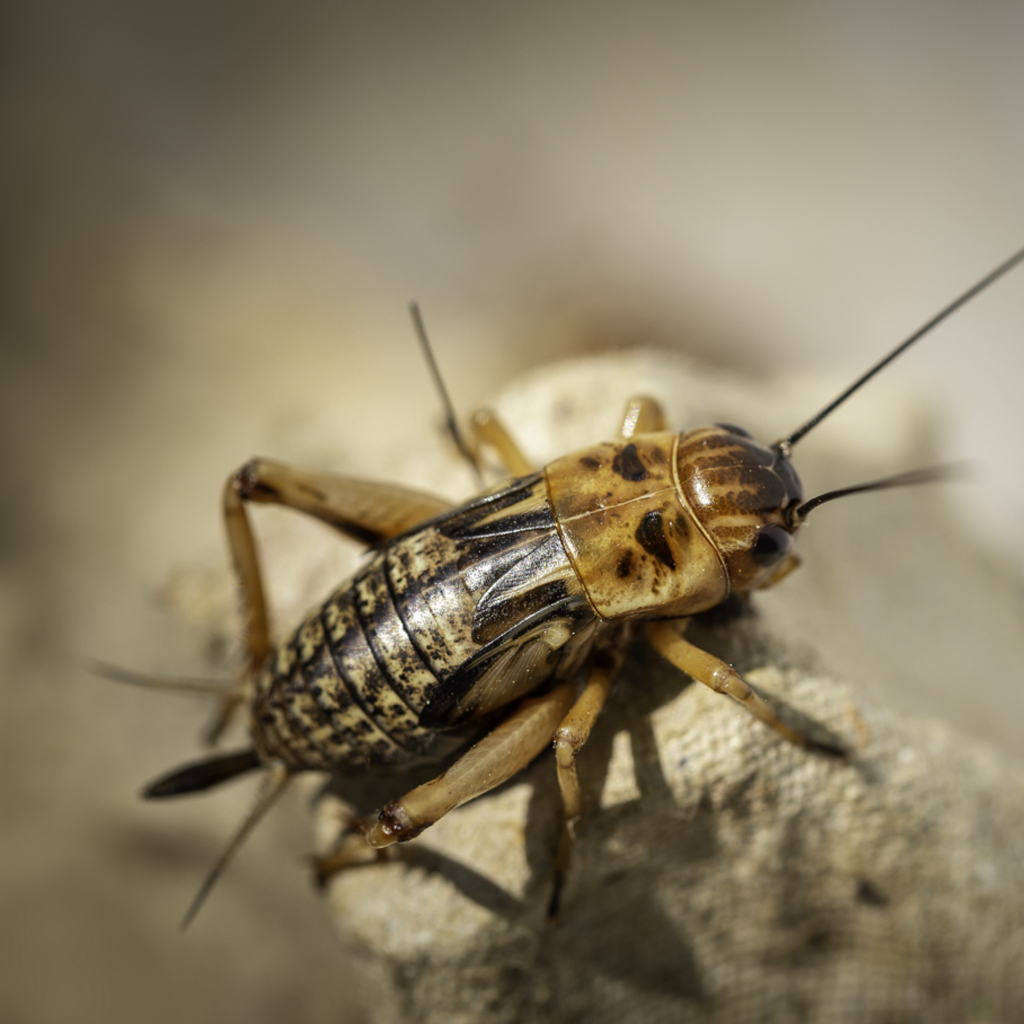


The distinctive chirp of crickets can signify a warm summer evening in the Coachella Valley, but indoors, crickets become a pest. While crickets are harmless to people, they can quickly become a nuisance in your home and cause damage. It’s important to call a cricket control expert in the Coachella Valley as soon as you know you have an infestation.
Crickets are approximately 1 inch in length, with slightly flattened bodies. They vary in color from light yellow, tan, dark brown, and black, and have three dark bands across the head. A cricket’s head, thorax and abdomen are clearly defined. They have six legs and two antennae. These antennae make a cricket distinguishable from a grasshopper. Most crickets have wings, though some species do not. Its distinctive chirping sound is caused by a male cricket rubbing its wings together.
Crickets leave behind droppings that are tiny and black, resembling crumbs. These droppings, along with chewed fabric and the chirping sound, can signify a cricket infestation.
Crickets are omnivorous and eat mostly plants and insects. They like to live in dark, humid places such as tall grass, shrubbery, forested areas, crawl spaces, and even under appliances. In warm weather they like to live outdoors, but in cooler temperatures they can enter buildings and structures for more warmth. Crickets are also attracted to light and can gather on lamp posts and walls near electrical lights.
A female cricket can lay eggs continuously, and can lay up to 2,000 eggs throughout its life. It deposits eggs into damp surfaces such as soil and leaf litter. After two weeks, the cricket nymph breaks free from its egg and emerges from the surface the egg was deposited into.
Cricket nymphs already look very similar to adults, lacking wings and reproductive organs. A cricket nymph will shed its exoskeleton approximately 8-10 times. A fresh exoskeleton has a milky-white appearance before it hardens and turns brown in a few hours.
After about a month, a cricket nymph grows wings. At this point it is fully mature and begins the process of mating and finding food. On average, a cricket can live for 90 days.
Rudy’s Termite & Pest Control are licensed Coachella Valley cricket control experts. Contact us today and let us solve the issue effectively.
Once inside your home crickets can feed on clothing, paper, food, carpet, upholstery, and houseplants. Crickets are nocturnal, and will typically spend their days in dark, humid places. Their nighttime chirping can cause you sleepless nights once they’ve established themselves inside your home.
Crickets feed on organic material such as indoor and outdoor plants and the food in our kitchens. They also like to eat fabric, meaning that they can cause damage in your home by eating through clothing, carpet, and upholstered furniture. Crickets can jump very high and can get into your home or business through torn window screens or through doors. Call Rudy’s Termite & Pest Control today and let us remove crickets from your home or business.